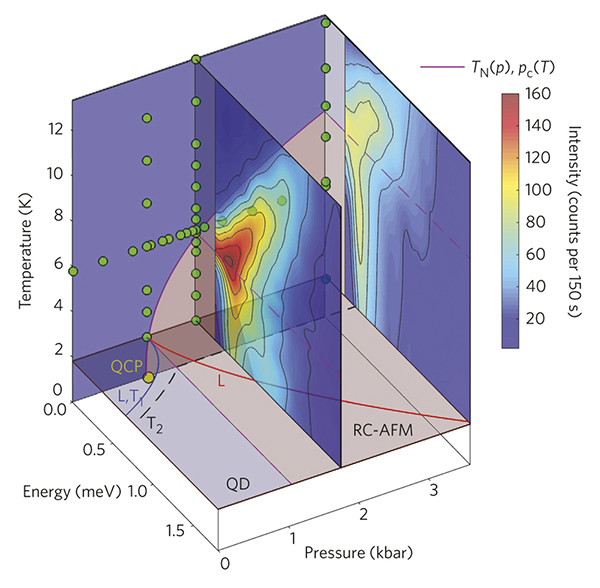|
|
Material of the Month July 2014 |
|
| Quantum and Classical Criticality in a Dimerized Quantum Antiferromagnet | ||

|
||
|
A quantum critical point (QCP) is a singularity in the phase diagram arising because of quantum mechanical fluctuations. The exotic properties of some of the most enigmatic physical systems, including unconventional metals and superconductors, quantum magnets and ultracold atomic condensates, have been related to the importance of critical quantum and thermal fluctuations near such a point. Complete thermodynamic and spectroscopic information is required to disentangle the effects of quantum and classical physics around a QCP. Here we achieve this control in a high-pressure, high-resolution neutron scattering experiment on the quantum dimer material TlCuCl3.
The figure shows the pressure-temperature phase diagram of TlCuCl3, revealing quantum and thermal critical dynamics.
This work was carried out in the groups of Prof. Christian Rüegg (PSI) and PD Dr. Karl Krämer.
References:
|
||